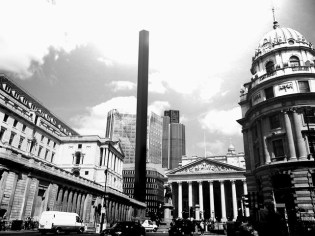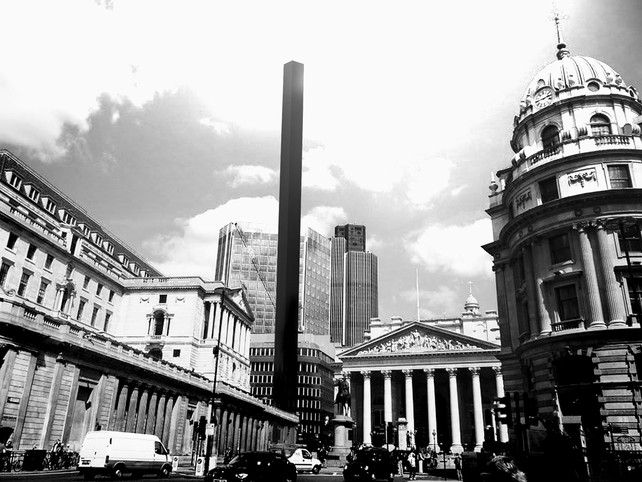
Alain de Botton's proposed atheist temple. (Image by Tom Greenall and Jordan Hodgson.)
Fundamentalism and magical thinking are all the rage these days. Rational scientific thinking is out, especially when it comes to climate change, and atheists are really unpopular.
But what if non-believers grabbed a few ideas from the religious set? Writer Alain de Botton, whose most recent book is called Religion for Atheists, has come up with a plan to build an enormous atheist temple in the city of London. On his website, de Botton asks “Even if religion isn’t true, can’t we enjoy the best bits?”
De Botton doesn’t see an atheist temple as a contradiction in terms. Here’s what he told The Guardian:
Normally a temple is to Jesus, Mary, or Buddha, but you can build a temple to anything that’s positive and good. That could mean a temple to love, friendship, calm, or perspective. Because of Richard Dawkins and Christopher Hitchens, atheism has become known as a destructive force. But there are lots of people who don’t believe but aren’t aggressive towards religions.
De Botton’s temple would be 151 feet tall, cost about $1.6 million, and incorporate symbolism celebrating the history of life on earth.
Perhaps not surprisingly, the proposal has met with grumpiness from his fellow atheists. Dawkins, author of The God Delusion and other blasphemous texts, thinks it would be a waste:
Atheists don’t need temples. I think there are better things to spend this kind of money on. If you are going to spend money on atheism you could improve secular education and build non-religious schools which teach rational, skeptical, critical thinking.
Maybe de Botton has a point, though. Education hasn’t succeeded in beating back the tide of anti-scientific, willfully ignorant fundamentalist thinking. Maybe some grandiose architecture is just what rational atheists need to compete in the marketplace of ideas, where they’ve increasingly been on the defensive.
While some evangelical Christians in the U.S. have voiced support for environmental protection, religious fundamentalists continue to attack secular, scientific thinking — not only on the teaching of evolution in the schools, but also on environmentalism in general and climate change science in particular.
And politicians scrambling for fundamentalist votes are eager to join in on the science-bashing. All in God’s name, of course.
Texas governor and failed presidential candidate Rick Perry famously called Al Gore a “false prophet” for a “secular carbon cult.” Fundamentalist groups such as the Cornwall Alliance make faith a central part of their climate change denial:
We believe Earth and its ecosystems — created by God’s intelligent design and infinite power and sustained by His faithful providence — are robust, resilient, self-regulating, and self-correcting, admirably suited for human flourishing, and displaying His glory. Earth’s climate system is no exception. Recent global warming is one of many natural cycles of warming and cooling in geologic history.
And let’s not forget what Newt Gingrich did to climate scientist and Christian Katharine Hayhoe.
So maybe secular, scientific thinkers should start acting more like fundamentalists. After all, our secular institutions are being co-opted by the religious right. This week, the Indiana State Senate approved a bill to teach creationism in public schools, and Ken Cuccinelli continues to use his office as Virginia Attorney General to harass a climate scientist.
De Botton’s temple is undeniably kind of wacky. But wacky seems to be what’s selling these days.
Editor’s note: This article originally stated that the temple would commemorate the “300-million-year history of life on earth.” Thanks to reader Sean Montague for pointing out that life has existed much longer than that. The actual number is closer to 4 billion years.



